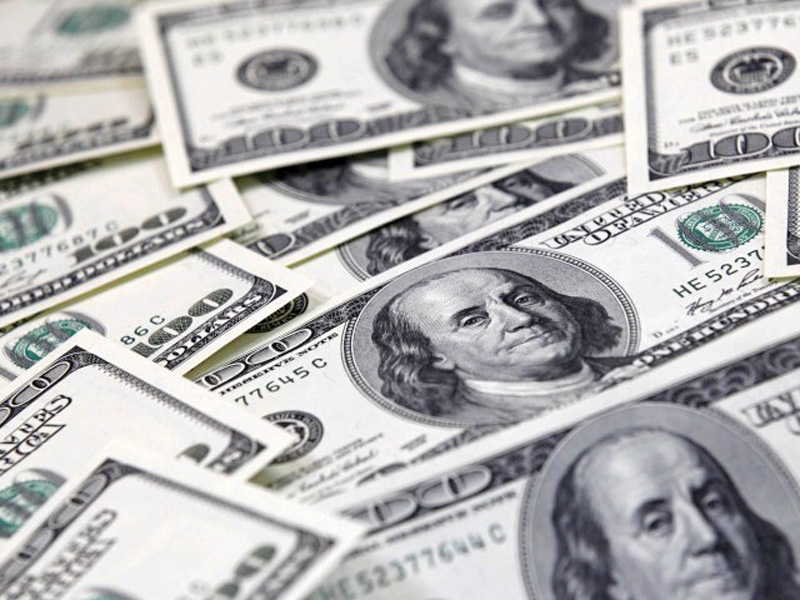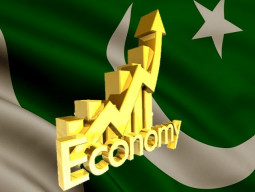
Pakistan received $6.7 billion in foreign economic assistance in the previous fiscal year, surpassing its annual projections, but the country could not stir up confidence in its economy among international development partners.
Pakistan got $6.67 billion in foreign funding during the last fiscal year 2013-14, against estimates of $5.75 billion, according to provisional figures compiled by the Economic Affairs Division. As much as 93% of the economic assistance came in the form of loans.
The PML-N government acquired these loans to finance the budget and meet the shortfall in external payments including repayment of previous loans.
However, the achievement was the result of some expensive borrowings estimated at $322.5 million from a consortium of commercial banks and issuance of $2 billion worth of dollar-denominated Eurobonds at an interest rate considered to be “significantly higher”.
The government had not budgeted any borrowing from commercial banks. Besides, it had originally planned to float only $500 million worth of Eurobonds.
It borrowed an additional $1.4 billion from these two sources, showed the EAD summary.
Except for the World Bank (WB) and United Kingdom, the disbursements from the country’s traditional bilateral and multilateral lenders fell short of budgetary projections, according to EAD documents. The flow of funds from the Asian Development Bank, China, European Union, France, Germany, Islamic Development Bank, Japan and the United States was far behind the projections, showed official data.
The international development partners have largely remained appreciative of the initial steps taken by the PML-N government to revive the economy but much-needed structural reforms are yet to be undertaken in the areas of energy and taxation, say independent economists.
Stagnating foreign investment, below potential exports, surging imports and debt repayments have increased the country’s dependence on foreign assistance aimed at balancing its books.
According to a latest report of the International Monetary Fund, Pakistan’s debt-to-gross domestic product (GDP) ratio, including IMF loans, was expected to remain at 63% in the last fiscal year, three percentage points higher than the limit imposed under an Act of parliament.
Under the Fiscal Responsibility and Debt Limitation Act of 2005, the country’s total debt should not exceed 60% of GDP.
The IMF report, however, shows that by the end of the current fiscal year 2014-15, the ratio will further increase to 65.8%, indicating the government’s inability to ease the debt burden.
The report projects that the country’s gross financing requirement for the current fiscal year will be $10.8 billion. The government has budgeted $8.6 billion in external loans and aid for the year, which is 28% higher than the assistance received last year.
According to the EAD, the disbursements from the WB and United Kingdom exceeded budgetary projections last year. The UK provided $265.6 million against estimate of $224 million. This grant was even higher than the US as the Obama administration provided $118.9 million under the Kerry-Lugar package, according to official documents. The US assistance constituted about 56% of the annual budgeted target of $212.7 million.
The US has committed $7.5 billion over five years under the Kerry-Lugar programme, but documents show a wide gap between the commitment and actual releases.
The WB gave $1.7 billion against annual commitment of $1.12 billion, exceeding the estimate for the first time in years. The flow of funds from Saudi Arabia also beat the estimate but the loans stood at only $55.5 million.
China gave $516.7 million or 37.8% of the budgetary projection of $1.37 billion. Japan had promised $325.8 million in loans and grants, but gave $182.9 million or 56% of the promised assistance.
The Islamic Development Bank gave $574 million or 84% of the promised amount, including an expensive loan of $408.8 million. The ADB disbursed $816.2 million or 82.4% of the budget estimate.
France gave $15.2 million or 60% of the estimate, the EU gave only $13.6 million or 43.3% of the estimate and Germany gave $36.5 million or 58% of the estimate, according to the EAD data.
Published in The Express Tribune, August 2nd, 2014.
Like Business on Facebook, follow @TribuneBiz on Twitter to stay informed and join in the conversation.
COMMENTS (10)
Comments are moderated and generally will be posted if they are on-topic and not abusive.
For more information, please see our Comments FAQ

1736942026-0/fizza-(33)1736942026-0-165x106.webp)


1736941045-0/fizza-(32)1736941045-0-165x106.webp)






1732012115-0/Untitled-design-(14)1732012115-0-270x192.webp)
1736844405-0/Express-Tribune-(2)1736844405-0-270x192.webp)










@Ranjha: Japan and US have reserve currencies. They don't need foreign currencies to finance imports. They can pay in their own currencies. We get these loans because we needed dollars. We can't print dollars can we?
Another thing is that IFIs usually give loans in 1-2% interest rates. Even with rupee depreciation of 5-7% a year these loans are not more expensive than domestic ones. Current PIB rates are 11.25% for 3 year maturities.
@Hafiz Shah Ali: Your answer is full of credibility. Pakistan cannot transfigure its economy from the present order without a massive appeal from within and then from without. Just look at Argentina who has just defaulted on its debt. In all these years, they have not been able to repay their debt and become independent. Salams
How long will Pakistan continue to rely on foreign aid. Just think what will happen to this stream of grants post 2014 withdrawal from Afghanistan I had very high hopes with PML-N government that they would massively reform the economic sector ,starting with much needed and urgent reforms in FBR.But I am disappointed.
@Zain: Very good sign for the looters and corrupt to borrow more and put a large percentage in their own accounts. NS and Co will be happy to see your comments. Keep it up man you are our economist of the future.
@Zain:
Really? You must have trained as an economist at The Bumblebee Institute of Technology. The loans denominated in foreign currency need to be paid in foreign currency; the domestic loans can be paid by just printing rupees. See the difference, Einstein? If not, compare Japan and US (domestic loans) to the basket case called Pakistan (foreign currency loans)!
@Zain: What will happen when the fed raises interest rates? Domestic interest rates will also have to go up or the rupee will start to depreciate. Rising domestic rates will hurt growth. If you keep rates the same and let the rupee depreciate all these cheap foreign loans start to look a lot less attractive.
@Zain: Do you have any clue how the global economy works?
Steps taken by government are more like a gas in a balloon. If balloon burst every point of gas comes out... Same are the steps in this case taken by government. Once rupee gets out of hand economy will need a support at every juncture.
External borrowing is still at a cost far below domestic borrowing. And if the economy keeps on expanding and the debt to GDP ratio decreases, there is no need for alarm.